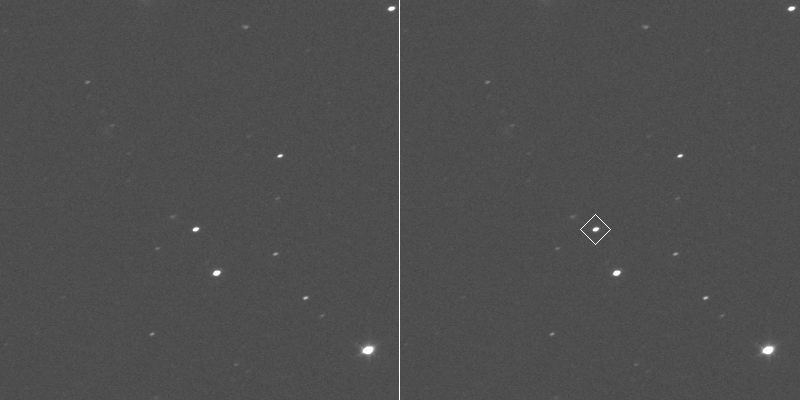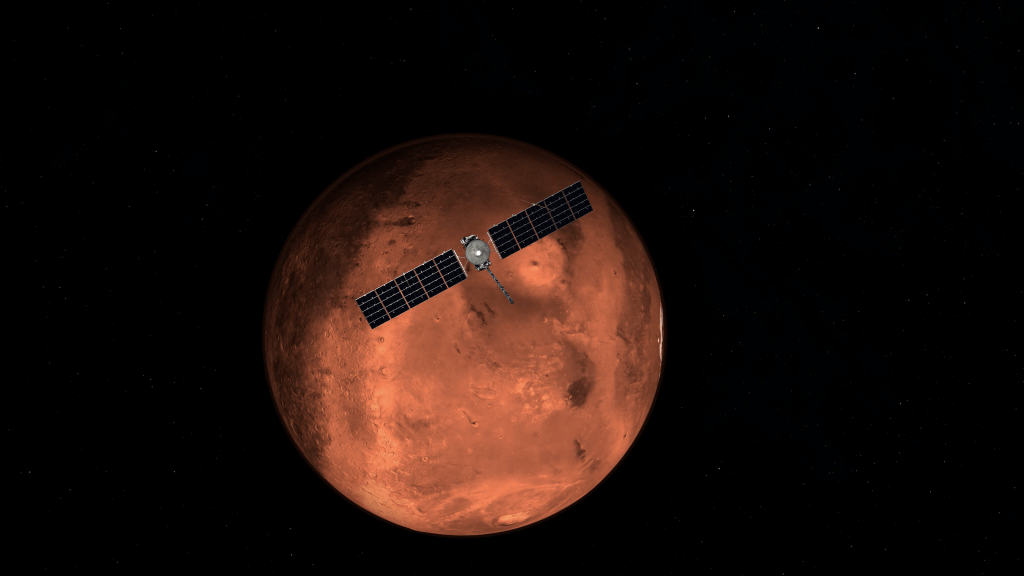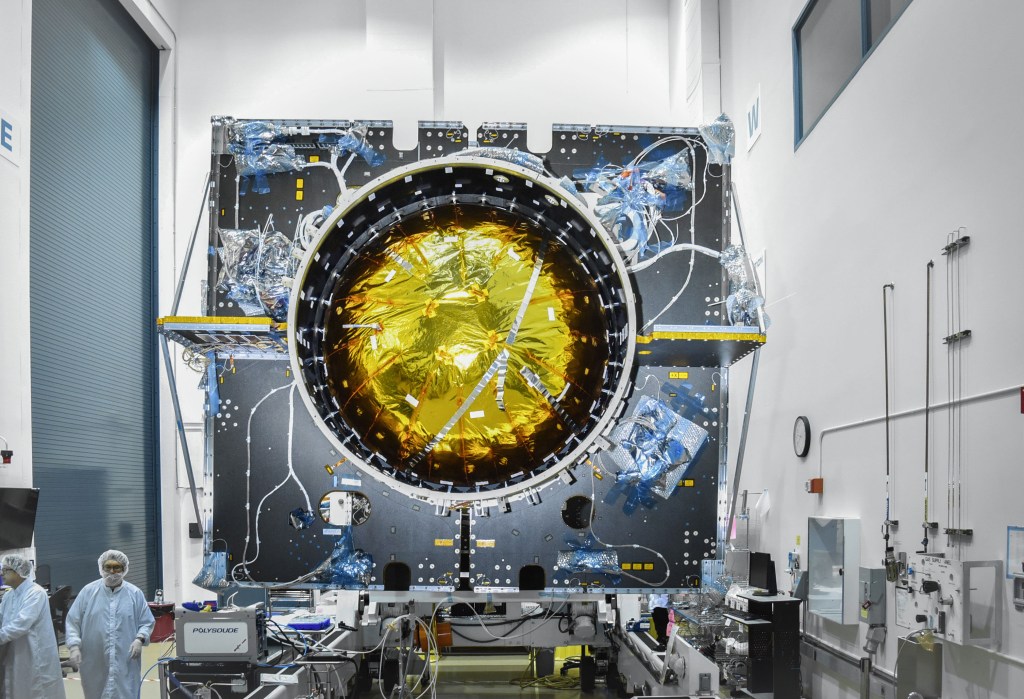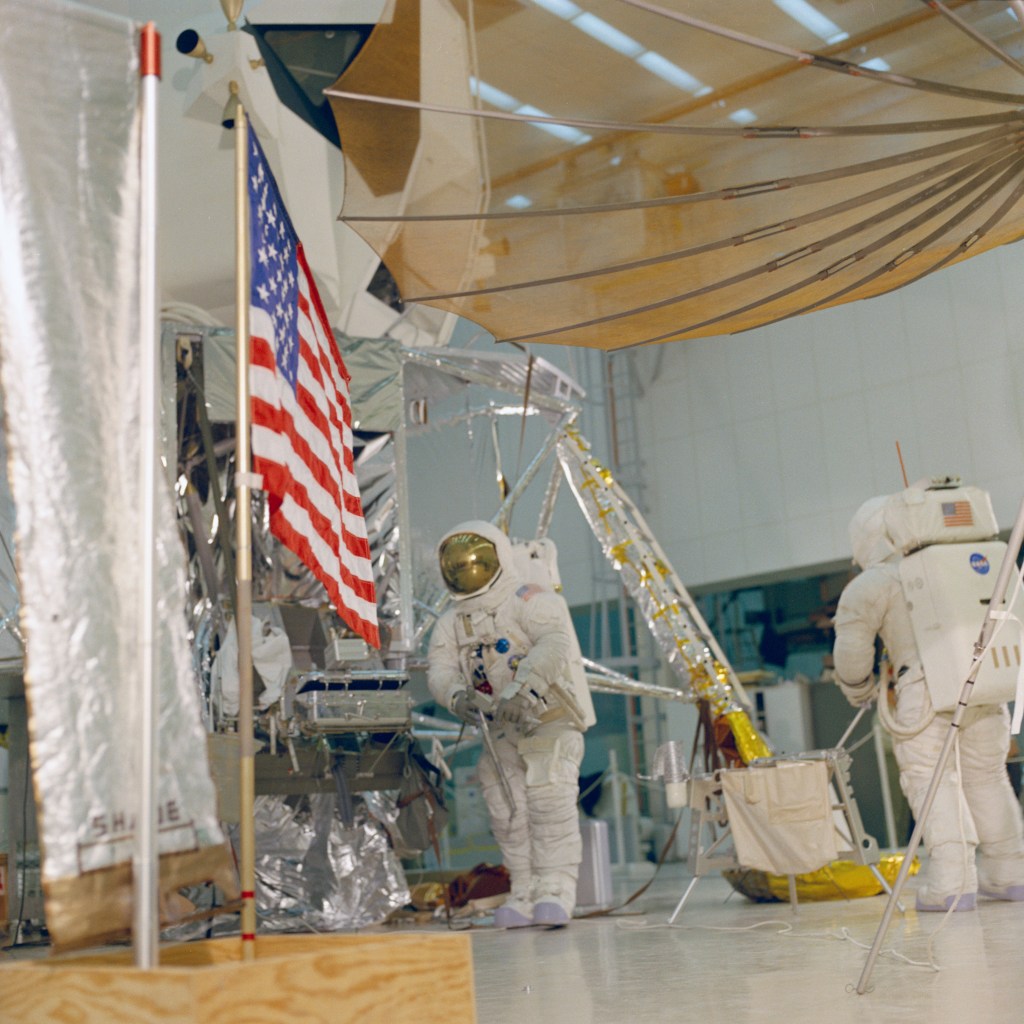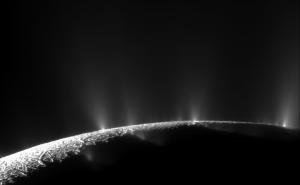Cassini is orbiting Saturn with a 31.9-day period in a plane inclined 48.1 degrees from the planet's equatorial plane. The most recent spacecraft tracking and telemetry data were obtained on Feb. 25 using one of the 34-meter diameter Deep Space Network (DSN) stations at Madrid, Spain.
Cassini is orbiting Saturn with a 31.9-day period in a plane inclined 48.1 degrees from the planet's equatorial plane. The most recent spacecraft tracking and telemetry data were obtained on Feb. 25 using one of the 34-meter diameter Deep Space Network (DSN) stations at Madrid, Spain. Except for the science instrument issues described in previous reports (for more information search the Cassini website for CAPS and USO), the spacecraft continues to be in an excellent state of health with all of its subsystems operating normally. Information on the present position of the Cassini spacecraft may be found on "Eyes on the Solar System".
The on-board S82 command sequence controlled the spacecraft's activities this week. Meanwhile, Cassini's Navigation team worked on upcoming Orbit Trim Maneuver opportunities, and the Sequence Implementation Process teams continued working on the ten-week command sequences S83, S84, and S85. Planning proceeded for the 2016 start of the F-ring and Proximal Orbits phase, and preparations were worked for next week's realtime Radio Science measurement of Titan's gravitational field.
Wednesday, Feb. 19 (DOY 050)
The Imaging Science Subsystem (ISS) completed a period of 28 hours observing ring spokes (http://go.usa.gov/4WGP) to create a movie. Half of the observation was lost, however, when the ISS wide-angle camera suffered a machine error, a known idiosyncrasy of the instrument that occurs infrequently. The camera recovered on its own. Next, The Visible and Infrared Mapping Spectrometer (VIMS) turned to Saturn for a two-minute storm watch observation. Finally, during an eight and three-quarter hour experiment, VIMS observed the reddish star L2 Puppis while it was occulted by the rings.
Thursday, Feb. 20 (DOY 051)
The spacecraft passed through apoapsis at a distance of about 2.9 million kilometers from Saturn. This marked the start of Saturn orbit #202. The Cosmic Dust Analyzer (CDA) started a 13-hour measurement of dust that orbits Saturn in the retrograde direction.
Friday, Feb. 21 (DOY 052)
The Composite Infrared Spectrometer (CIRS) began a 24 hour observation of Saturn’s atmosphere to determine temperatures in the upper troposphere and the tropopause.
Saturday, Feb. 22 (DOY 053)
CIRS carried out a 90 minute observation in the Titan monitoring campaign from a distance of 3.8 million kilometers. When that observation completed, the CDA began a 22-hour retrograde-dust measurement.
Sunday, Feb. 23 (DOY 054)
An image of Saturn with the rings edge-on, post-processed by an amateur in Spain using raw images from Cassini (http://saturn.jpl.nasa.gov/photos/raw), was featured today as NASA's Astronomy Picture of the Day: http://apod.nasa.gov/apod/ap140223.html
Monday, Feb. 24 (DOY 055)
ISS, CIRS and VIMS made another Titan monitoring campaign observation, this one from 3.6 million kilometers. Next, ISS began a 34.5-hour observation of the irregular moon Kiviuq. This small dark object, about 14 kilometers in diameter, follows a highly inclined orbit about 11.1 million kilometers from Saturn.
Particles in Saturn's innermost ring, the D ring, whip around the giant planet in less than five hours. Evidence of this raceway is barely visible as a dim streak in an image featured today: /resources/15981
Tuesday, Feb. 25 (DOY 056)
The Deep Space Network linked Cassini's engineers and scientists with the spacecraft on four occasions this week, using stations in Spain and Australia. In addition to its routine communications and radiometric data, today's nine-hour tracking period in Madrid participated in an operations-readiness test in advance of next week's Titan T-99 encounter. During the encounter, the Radio Science team will use the Doppler-shift signature from Cassini's X-band (8 GHz) and Ka-band (32 GHz) radio transponders to help determine more about the nature of Titan's structure and its oceanic interior.

